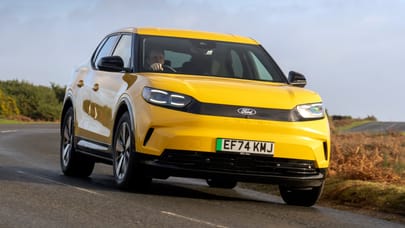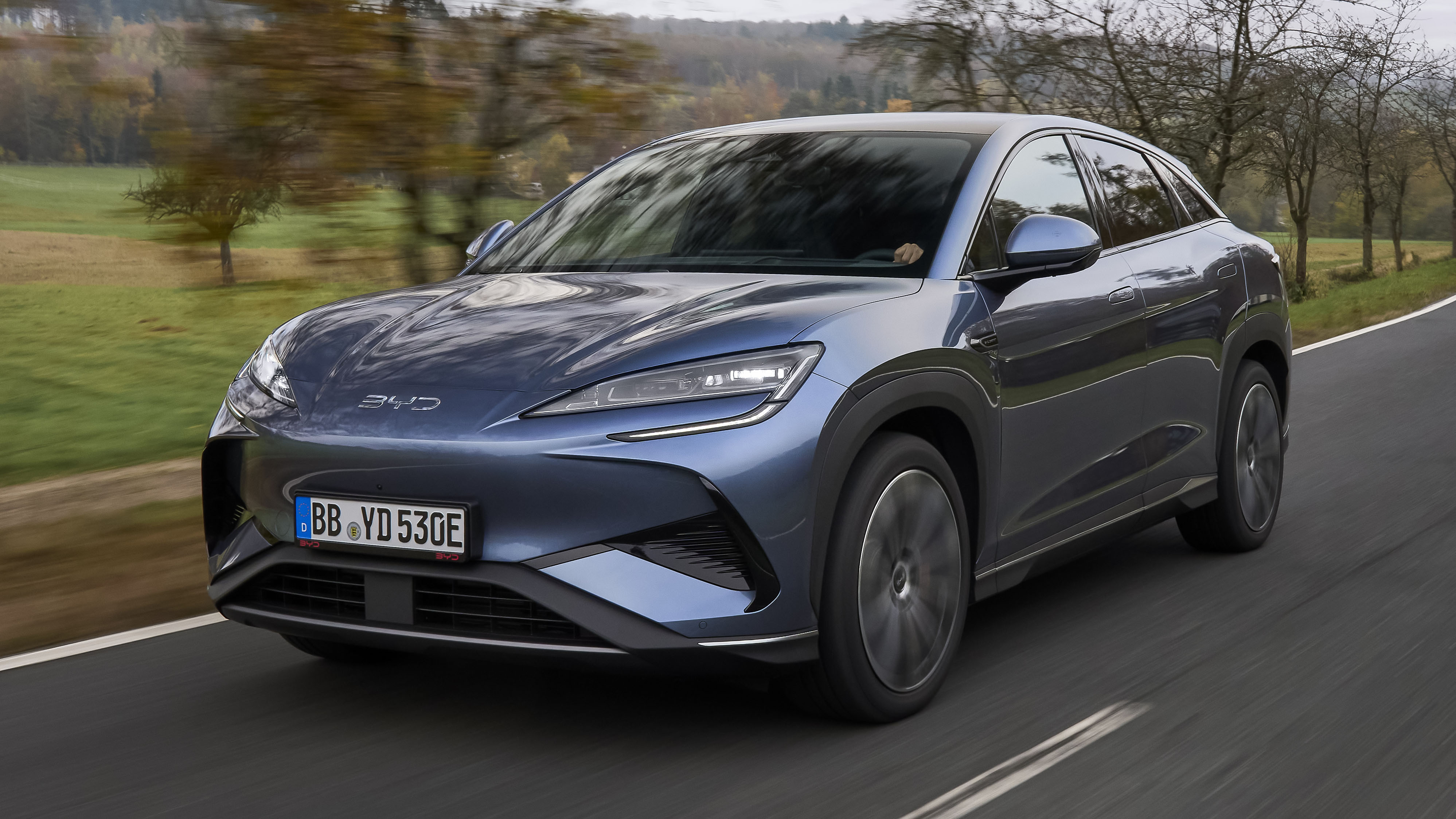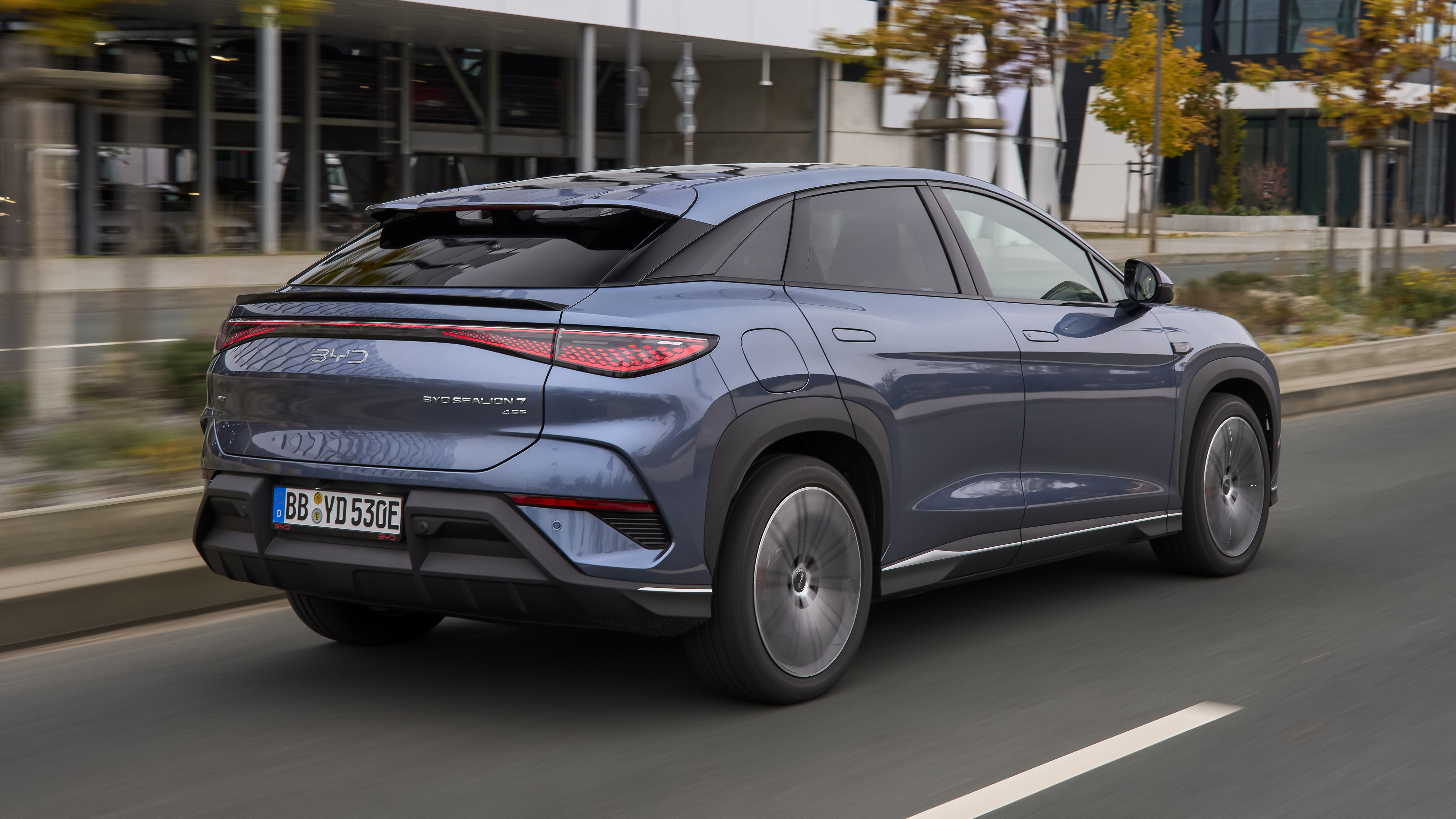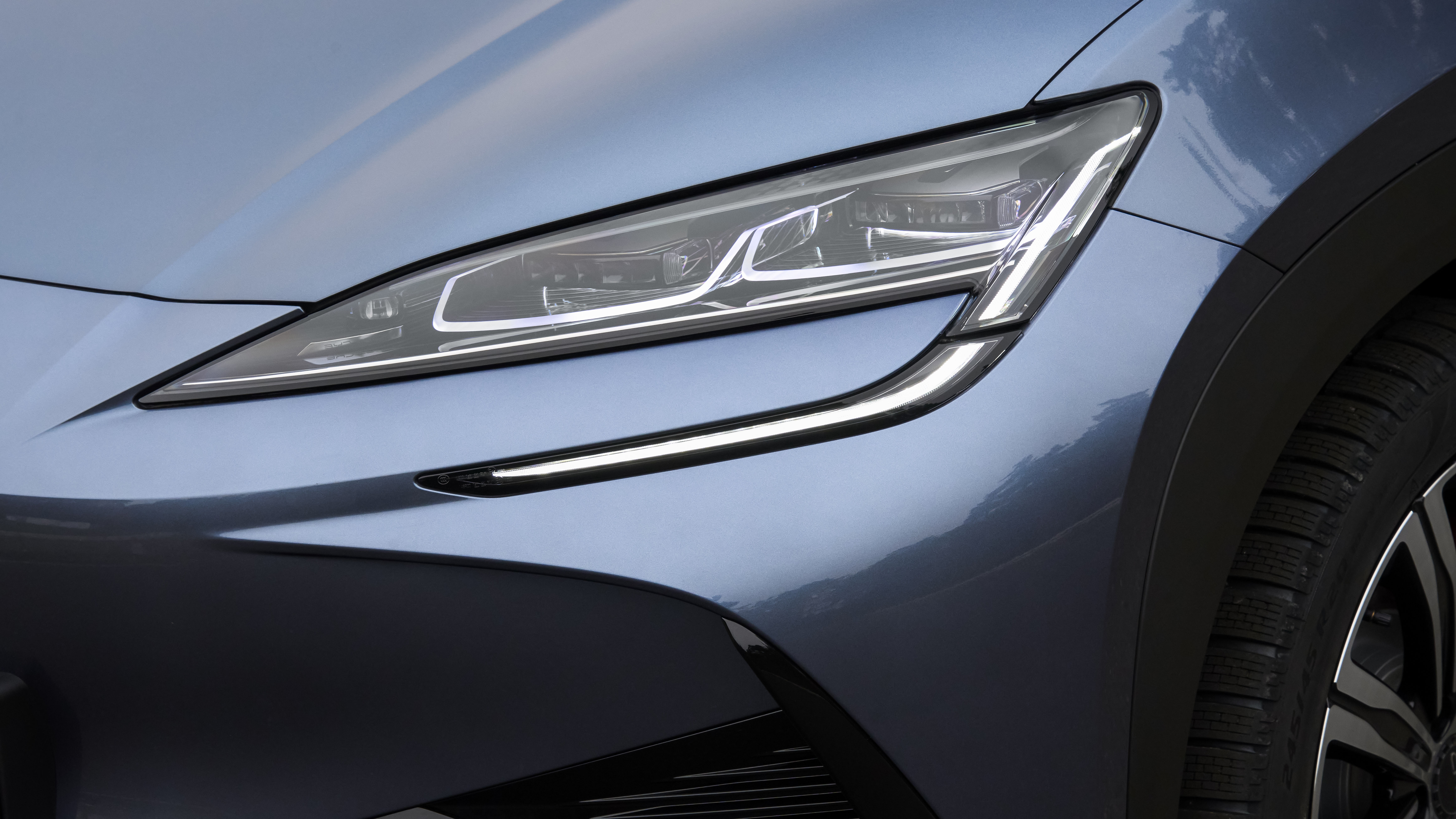
Good stuff
Design, lots of space and comfort, generous equipment in all versions
Bad stuff
Unengaging to drive and not all that efficient, so get the slower version
Overview
What is it?
It's a moderately sporty electric crossover-coupe. That puts it up against the Ford Capri and Ford Mustang Mach E, Skoda Enyaq iV Coupe, Kia EV6, Peugeot 3008, VW ID.5 GTX, Cupra Tavascan (made like the BYD in China), Nissan Ariya and Tesla Model Y.
The name links it to others in BYD's 'Ocean series', and indeed it has close platform links with the Seal electric saloon. The number 7 might make you think it's a seven-seater. But it isn't. Rather it's simply the seventh BYD in the range in Europe. Although in a mission to confuse this is it's actually the fifth BYD in Britain.
BYD has lately become the world's biggest electric car maker, and sells one in every three new cars in the world's biggest market, China. And now it's coming for VW's lunch. And Ford's, Renault's, Peugeot's.
Oh and Tesla's. The firm that got everyone used to the idea of a new electric brand and is now being hoisted with that very petard.
IS IT CHEAP?
Not really. Prices start at £46,000 or so, which sounds a lot but is where those rivals live. And all three Sealion 7 versions (we'll drop the 7 from now shall we?) are extremely well equipped and nicely finished. It's also a bit bigger than the rivals we just named, with notable rear legroom.
The base version, Comfort, has RWD and an 82.5kWh battery for 301 miles of WLTP range. That slips to 285 miles if you spec Design, which has exactly the same equipment but adds a front motor and bigger wheels. That slices your 0-62 time from 6.7 sec to 4.3. Finally, a 91.3kWh battery comes in the twin-motor Excellence, bringing WLTP range back to 314 miles.
LOOKS DECENT…
BYD's design honcho is Wolfgang Egger, ex-Alfa Romeo. He's been there a while and has a studio of 1,000 designers. The Sealion has a deliberately European flavour. The front end looks very EV, and the sides have soft but full curves. Although once you've seen Citroen C5 X in the rear half of the profile it's hard to unsee. There's neat detailing in the lights and hidden door handles.
AND INSIDE?
It's a roomy, well-finished and generously kitted place. Your family will be happy. It's also more supple in the ride than the 'sporty' hype might have you believe. Add that to the general quietness and you've got a congenial vehicle for the long haul.
The tech plays big, of course, lead billing going to BYD's signature motorised rotating touchscreen. The landscape layout looks better integrated, but if you're a heading-up rather than north-up kinda navigation user (we're not going to wade into that hornets' nest), portrait orientation makes more sense.
WHAT'S IT LIKE TO DRIVE?
Performance is nicely modulated, smooth, and lives up to the figures.
The handling is very secure and unperturbed, with decent control when the road undulates. For most drivers it will be just fine.
But we want more. With the caveat that this verdict is provisional because we tested it on winter tyres the Sealion is a slight let-down because it's not as engaging as the Seal saloon.
The steering is numb and the brake pedal too long in travel, and neither of them give you the sort of sense of connection you need to drive smoothly and confidently. Or indeed to enjoy the process.
WHAT ABOUT THE ELECTRIC SYSTEM?
It's impressive in many ways. It has BYD's 'Blade' battery, a cell-to-body type. Most batteries use cells arranged in modules, and modules arranged into a pack, and the pack built into the car. All that structure is needed because of cooling and protection against damage.
Instead, BYD builds its cells straight into the body. It makes the car more rigid and potentially lighter (although the Sealion is still chunky). BYD manages it by clever cooling and also because the cell anodes have lithium-iron-phosphate (LFP) chemistry, not the more common lithium-nickel-manganese-cobalt chemistry.
Stay with us here. LFP cells are less combustible and more robust. They're also cheaper and use no nickel or cobalt, minerals that are hard to mine. But LFP cells don't have such high energy density as NMC. The Blade battery compensates for this lack of density because it doesn't waste space with structure around the modules.
Another advantage of LFP batteries is they're more durable for deep discharges, so you don't need to worry about repeatedly driving down close to fully flat.
There's more. Most LFP batteries don't charge as fast as NMC types. But BYD has managed to make this one impressively quick, drawing 230kW for the top version, and sustaining high power through the charge event, so it's 10-80 percent in just 24 minutes for the Excellence. Our maths reckons that's an average 170kW. Really good.
The rear electric motor is one of the fastest-revving in any car, which also has useful repercussions for Autobahn driving, explained in the 'driving' tab of this review.
BYD also has one of the most advanced heat pumps around, fitted as standard, so winter range shouldn't take too much of a knock.
All of which said, total range isn't actually that great, partly because it's heavy and runs big wheels. A Kia EV6 twin-motor is rated at 361 miles for the base rear-drive version, versus 301 for the Sealion.
What's the verdict?
On the surface this is a good buy: it's big, roomy and well-equipped for the price. The cabin is agreeable and it's refined. It's also reassuring to have a durable LFP battery, especially one that can charge so fast.
But for a crossover pitched as sporty, even though it's quick, it's not as much fun as some rivals (Ford, Cupra, Kia) on twisty roads. Although to be fair, our first drive was on winter tyres, so we'll update this come the February UK launch.
You've got lots of choice among EV coupe-crossovers. This wouldn't be the one we'd choose. But if you like the looks and interior, the Sealion 7 isn't a silly option.
The Rivals
Trending this week
- Long Term Review
Life with a 500bhp BMW 550e: do you really need an M5?









